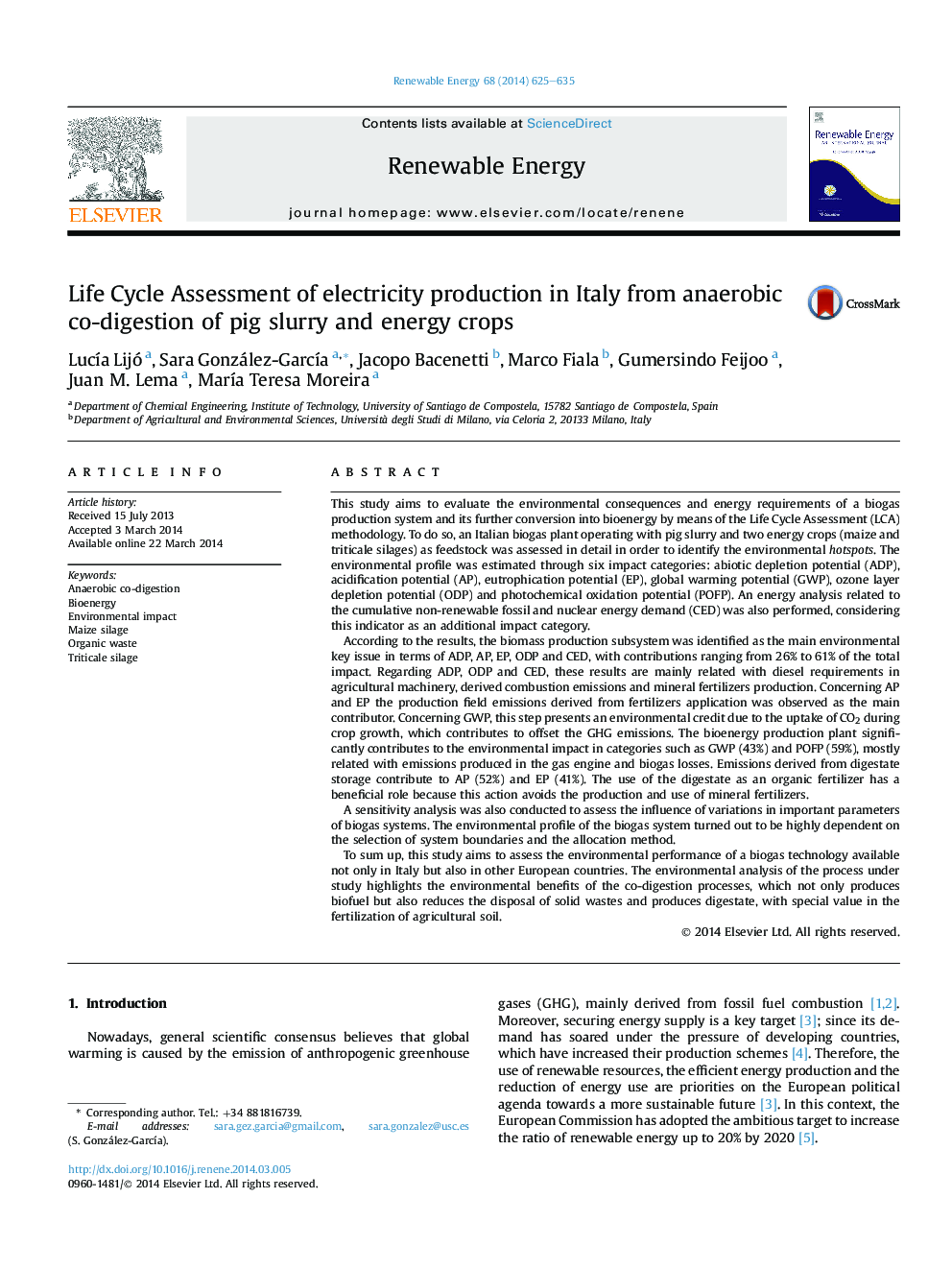| کد مقاله | کد نشریه | سال انتشار | مقاله انگلیسی | نسخه تمام متن |
|---|---|---|---|---|
| 300171 | 512470 | 2014 | 11 صفحه PDF | دانلود رایگان |
• An environmental analysis of a biogas production system was performed.
• Processes with the highest impact contributions were identified.
• The CO2 uptake during crops growing contributed to reduce global warming potential.
• Avoided mineral fertilization using the digestate achieved high impact savings.
• Crops cultivation was detected as the most contributing issue.
This study aims to evaluate the environmental consequences and energy requirements of a biogas production system and its further conversion into bioenergy by means of the Life Cycle Assessment (LCA) methodology. To do so, an Italian biogas plant operating with pig slurry and two energy crops (maize and triticale silages) as feedstock was assessed in detail in order to identify the environmental hotspots. The environmental profile was estimated through six impact categories: abiotic depletion potential (ADP), acidification potential (AP), eutrophication potential (EP), global warming potential (GWP), ozone layer depletion potential (ODP) and photochemical oxidation potential (POFP). An energy analysis related to the cumulative non-renewable fossil and nuclear energy demand (CED) was also performed, considering this indicator as an additional impact category.According to the results, the biomass production subsystem was identified as the main environmental key issue in terms of ADP, AP, EP, ODP and CED, with contributions ranging from 26% to 61% of the total impact. Regarding ADP, ODP and CED, these results are mainly related with diesel requirements in agricultural machinery, derived combustion emissions and mineral fertilizers production. Concerning AP and EP the production field emissions derived from fertilizers application was observed as the main contributor. Concerning GWP, this step presents an environmental credit due to the uptake of CO2 during crop growth, which contributes to offset the GHG emissions. The bioenergy production plant significantly contributes to the environmental impact in categories such as GWP (43%) and POFP (59%), mostly related with emissions produced in the gas engine and biogas losses. Emissions derived from digestate storage contribute to AP (52%) and EP (41%). The use of the digestate as an organic fertilizer has a beneficial role because this action avoids the production and use of mineral fertilizers.A sensitivity analysis was also conducted to assess the influence of variations in important parameters of biogas systems. The environmental profile of the biogas system turned out to be highly dependent on the selection of system boundaries and the allocation method.To sum up, this study aims to assess the environmental performance of a biogas technology available not only in Italy but also in other European countries. The environmental analysis of the process under study highlights the environmental benefits of the co-digestion processes, which not only produces biofuel but also reduces the disposal of solid wastes and produces digestate, with special value in the fertilization of agricultural soil.
Journal: Renewable Energy - Volume 68, August 2014, Pages 625–635
